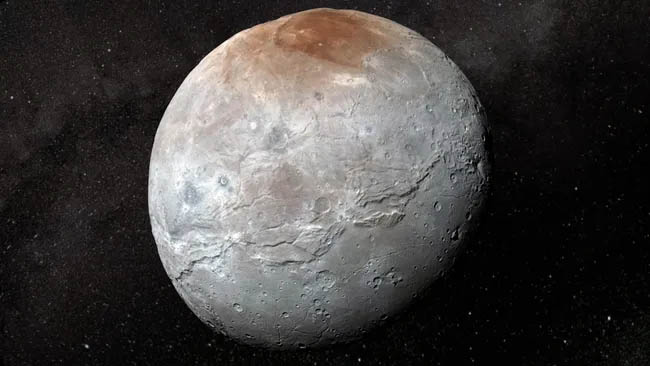Science: Using the James Webb Space Telescope (JWST), astronomers have detected carbon dioxide and hydrogen peroxide on the frozen surface of Pluto’s largest moon, Charon. Detecting these molecules could help scientists figure out how Charon and other icy bodies at the edge of the solar system came to be. Since its discovery in 1978, Charon has been studied extensively — but previous research has been limited in terms of what wavelengths of light could be detected during these analyses. This left gaps in our understanding of the composition of the surface of this moon of Pluto. As a result, although scientists have detected water ice, ammonia-containing species, and organic compounds on Charon, carbon dioxide and hydrogen peroxide have not been detected. Until now, that is.
The team, led by Sylvia Protopapa of the Southwest Research Institute (SwRI), filled these gaps by studying Charon with JWST’s Near-Infrared Spectrograph (NIRSpec) instrument. “Our research shows that Charon’s surface preserves evidence of its formation through the presence of carbon dioxide, as well as indications of radiative processes through the presence of hydrogen peroxide,” Protopapa told Space.com. “These discoveries expand Charon’s known composition catalog, which includes water ice, ammonia-rich species, and organic matter responsible for its brown and red colors.”
